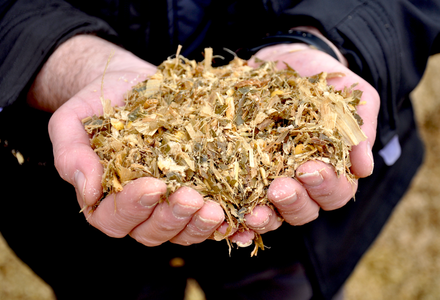Planning the second half of your silage season
04 July 2019
Last summer’s drought brought into sharp focus the importance of having enough silage to feed.
But should we wait until facing a silage shortfall before doing everything possible to conserve tonnes of dry matter, whatever the crop. Or, should it be normal practice? It probably boils down to your attitude to risk.
Find out more from Ken Stroud, Volac Business Manager.
_original.jpg?1562159907)
Take stock
Now that we’re half way through the year, it’s a good time to take stock. How much grass silage have you made already? And how much more silage in total –including grass, wholecrop and maize – do you need to make?
Remember, silage heating and inefficient fermentation are the dual enemies of wholecrop and maize silages (grass silage, too, if compaction is an issue). Both enemies not only erode silage nutrient content, but also the quantity of dry matter.
In maize, for instance, a poor fermentation can cause DM losses approaching 10%. That’s like losing nearly one trailer in every 10 that goes into the clamp. Worse still, these losses are invisible. And these are before any further losses from silage heating, which can typically be around 20% even on a good silage.
Reduce losses
So what can you do? Maximising your tonnes of DM requires best practice in the field and in the clamp.
For example, while it might be tempting to cut grass, wholecrop or maize crops a bit lower to gain extra bulk, don’t do it. The lowest part of the stem not only has the poorest feed value, it’s also likely to introduce bad ‘microbes’ into the clamp, which can cause exactly the losses that you don’t want.
Similarly, given the dual risks to DM of heating and inefficient fermentation, it makes sense to protect silage with an additive designed to tackle both problems. For added convenience, check it can also be used across all three silage crops. That way, anything you don’t use on one crop can be used on the next. And make sure you order enough. Too many farmers run out, leaving the last few loads going into the clamp untreated. This is a particular problem with higher DM crops, because the top of the clamp suffers the most. A good additive should have a shelf life of two years.
There are plenty of other important steps to maximise silage tonnes this season – including cutting crops at the optimum stage, wilting grass to the optimum % DM, and effective clamp consolidation and sealing. Many of these sound obvious. The secret is knowing how to implement them well.
We’re happy to help with our free Cut to Clamp silage audits. To find out more, get in touch with our team today or request your free on farm silage consultation online.
_copy_listing.png?1559589437)

